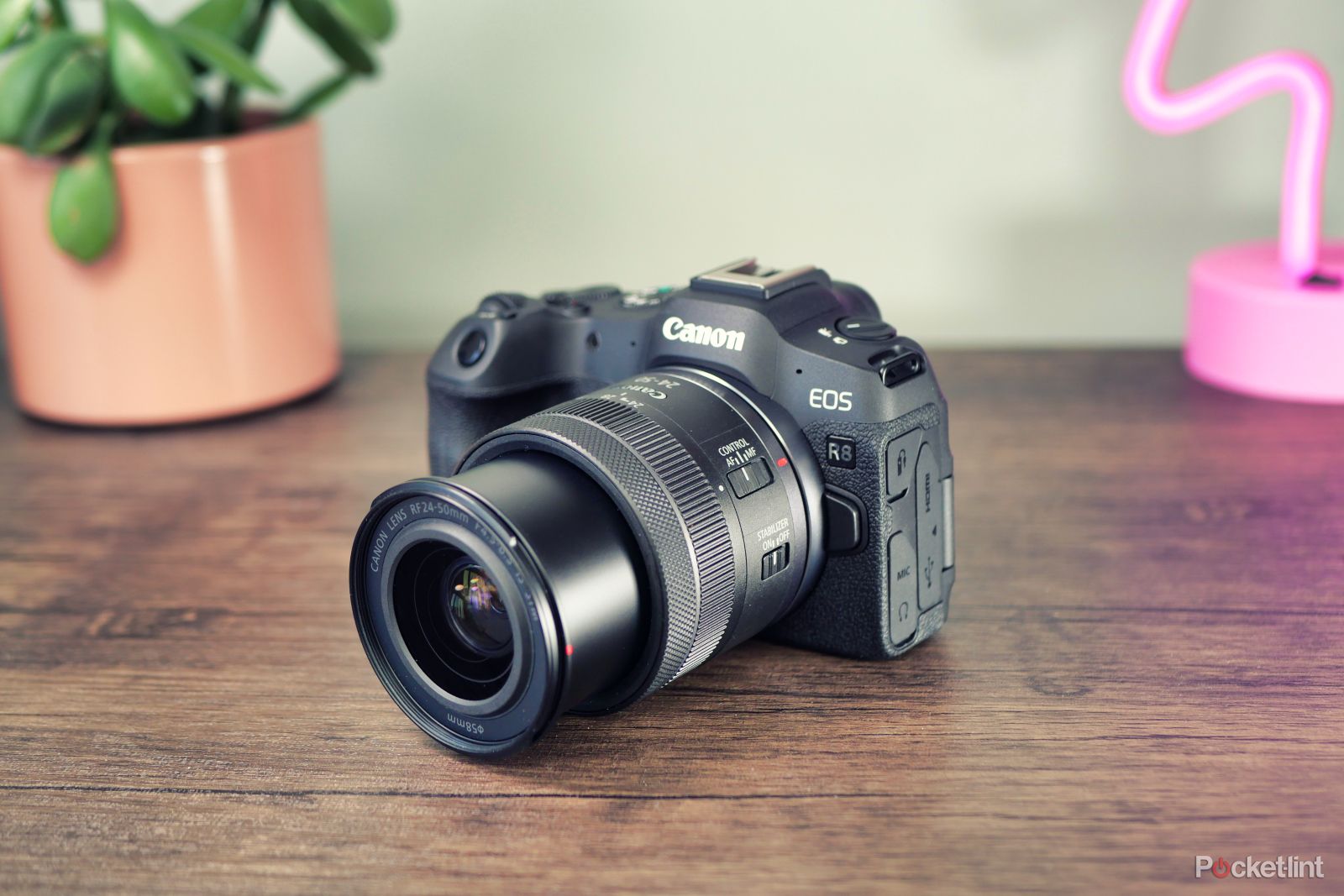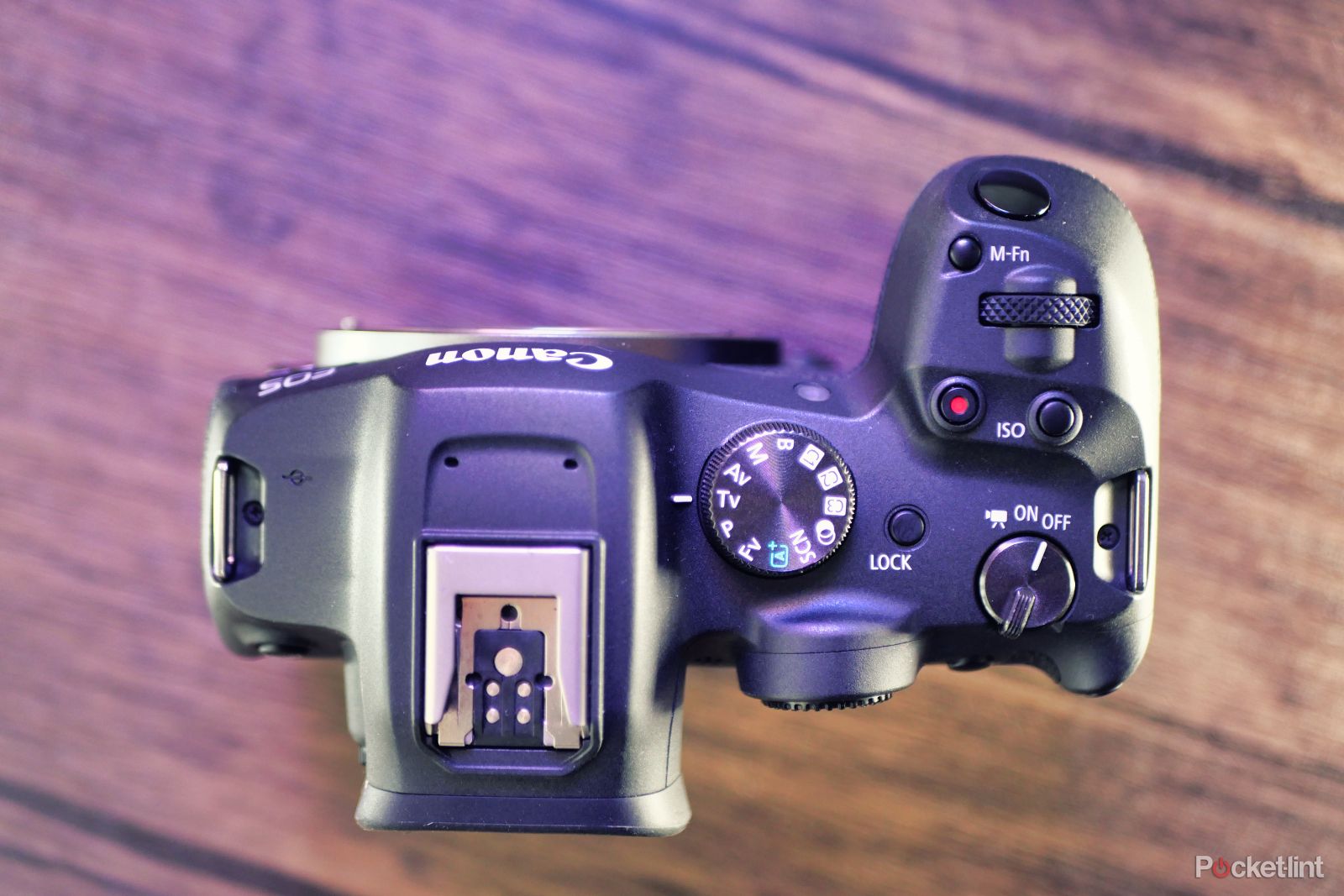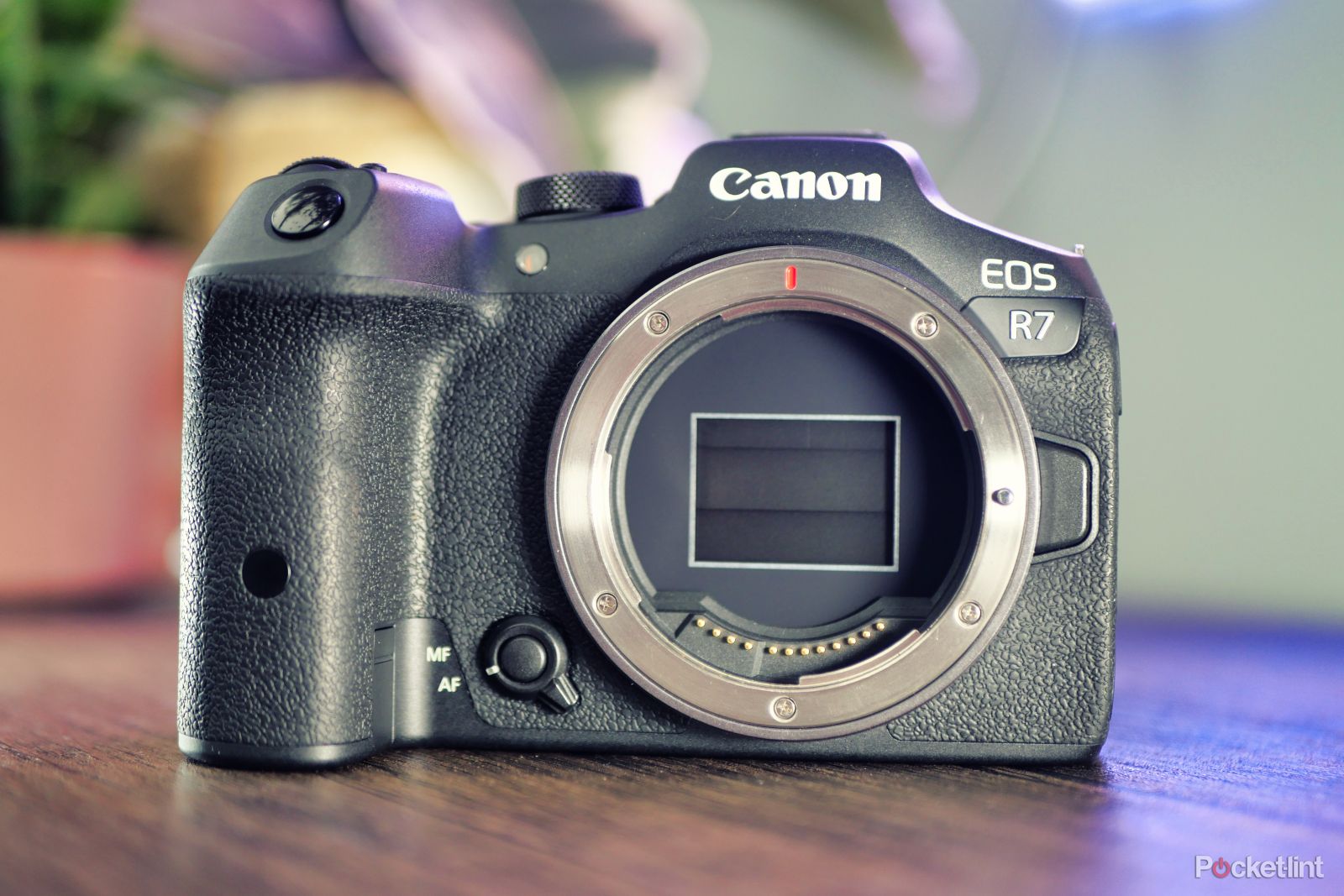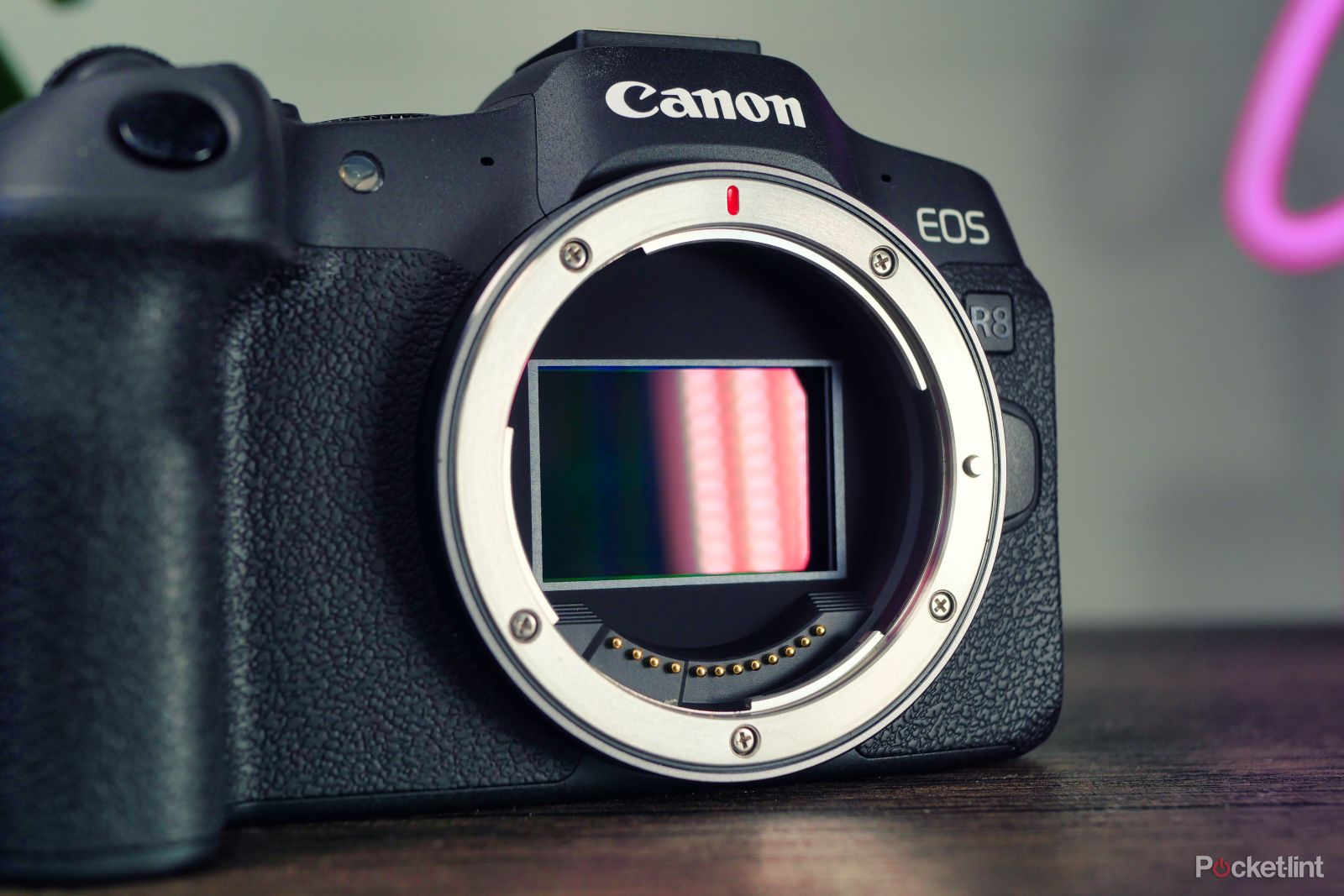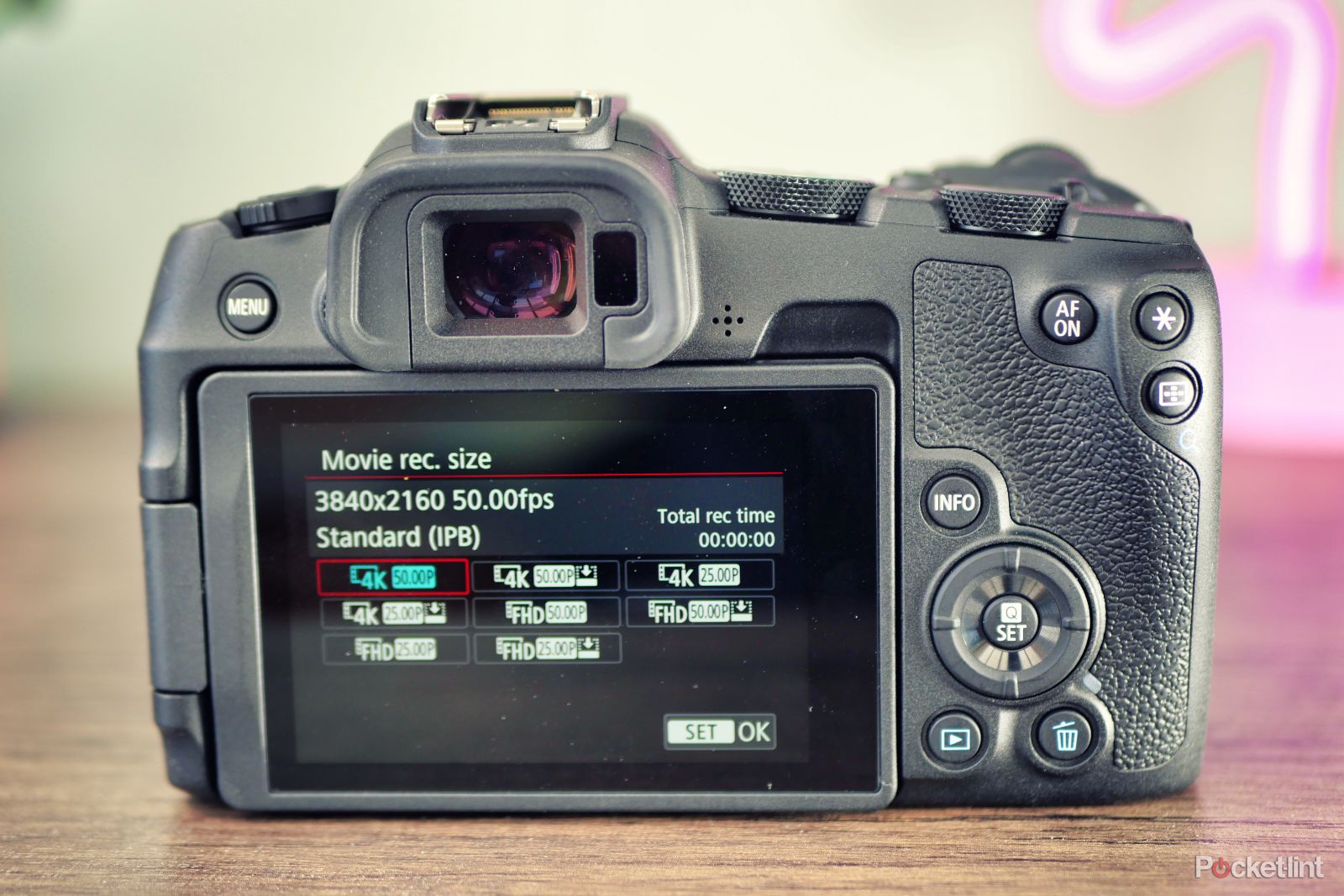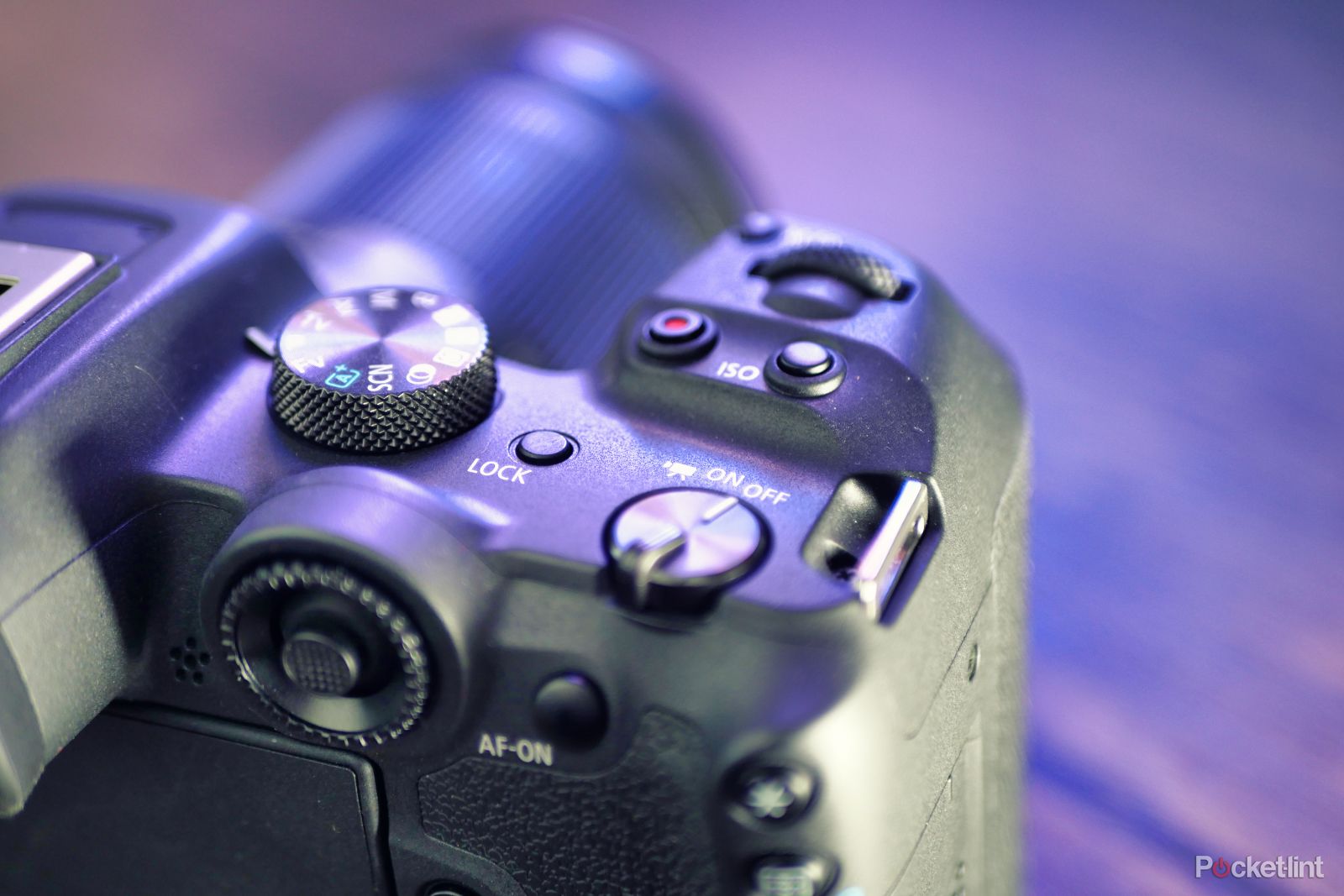-
Canon
Canon EOS R8
Our top pick
The Canon R8 serves as the most affordable entry point into Canon’s full-frame ecosystem. It loses out on the IBIS and has simplified controls, but it’s also one of the most compact and lightweight full-frame cameras on the market, which makes it very appealing.
Pros- One of the smallest full-frame bodies
- Oversampled 4K60 video
- Well priced
-
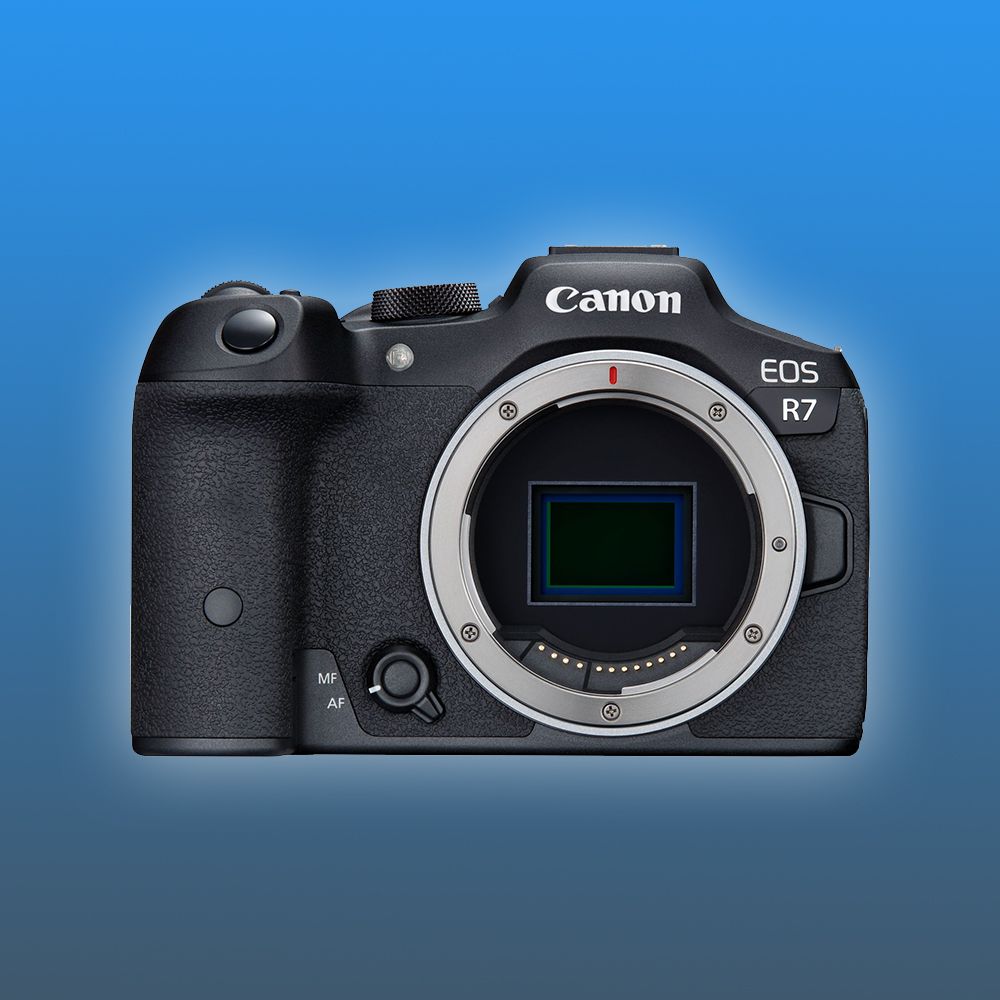
Canon
Canon EOS R7
Also great
The Canon EOS R7 sits at the top of Canon’s APS-C camera lineup. It has almost everything you could need from a mirrorless body, but its lens selection is quite limited at present. If you’re not swayed by the allure of a larger sensor this could be an excellent option.
Pros- Excellent IBIS
- More professional controls
- Dual SD card slots
The Canon EOS R8 and EOS R7 and similarly priced, and similarly named, too – but the cameras are very different in terms of what they offer and how they feel to shoot with.
The EOS R7 sits as the flagship model in the brand’s mirrorless APS-C lineup, whereas the R8 serves as the most affordable entry point into Canon’s full-frame mirrorless ecosystem.
The question is, which model is deserving of your hard-earned cash? We’ve had hands-on experience with both cameras, and compared them from every angle to help you make your decision. Let’s get stuck in.
Specs, availability and pricing
The Canon EOS R7 was announced in May 2022 and became available to purchase towards the end of June 2022. It carries an MSRP of $1,499 / £1,349 / €1,649 for the body only.
The Canon EOS R8 was announced in February 2023 and became available to purchase in March 2023. It retails for $1,499 / £1,699 / €1,799.
-
Canon EOS R8 Canon EOS R7 Sensor Size Full-frame APS-C Video Resolution 4K 60fps 4K 60fps Photo Resolution 24.2MP 32.5MP Battery LP-E17 LP-E6 Size 132.5×86.1×70.0 mm 132.0×90.4×91.7 mm Weight 461 grams 612 grams Water Resistance Weather-resistant construction Weather-resistant construction Lens RF-mount RF / RF-S mount
Design and displays
- Both: 2.36 Million dots 120Hz OLED EVF, 1.62 million dots flip-out touchscreen LCD
Typically, APS-C cameras are the smaller option, but that’s not the case when comparing these two cameras. It’s the unusually compact and lightweight EOS R8 that takes the crown when it comes to portability. It’s the smallest and lightest full-frame camera that Canon has ever produced, and that, by itself, is a pretty big selling point for the camera.
The EOS R7, despite having a smaller sensor, packs some pretty impressive specifications – and it therefore needs a larger chassis to pack everything in, and keep itself sufficiently cool in the process.
The displays are exactly the same across the two cameras. In either case, you’ll get a nice sharp OLED EVF with a smooth 120Hz refresh rate, along with a flip-out touchscreen LCD. The LCD is nothing to write home about, but it’s responsive, bright enough for the majority of scenarios and sufficiently sharp.
Both cameras have Canon’s signature ergonomic body shape and both are constructed with a magnesium alloy material. The layout and shape differ quite significantly, though.
The R7 has a deeper grip which we find slightly more comfortable than the R8, it also has more physical control options. The R8 does away with the rear wheel and joystick in favour of simplicity, but these are controls that we really missed. The R7 maintains these important controls, but does place them in a slightly unusual position next to the eyepiece.
When it comes to connectivity, the two cameras are largely the same, aside from the fact that the ports are in slightly different positions. There’s one crucial difference, though, and that’s the fact that the EOS R7 has dual SD-card slots, whereas the R8 only has a single slot to work with.
Photographic features
- EOS R8: Burst shooting up to 6 FPS 1st curtain shutter, 40 FPS electronic shutter
- EOS R7: Burst shooting up to 15 FPS mechanical, 30 FPS electronic shutter
The Canon EOS R7 offers a higher resolution than the R8, offering up to 32.5MP stills, compared to 24.2MP on the R8. That’s only half of the story, however, as the EOS R8 has a full-frame sensor, rather than the APS-C sensor in the R7.
As you probably know, larger sensors are able to produce a much shallower depth of field and have better performance in low-light conditions. They also offer a wider field of view than their APS-C counterparts, particularly if the same lenses are being used – and with an RF mount on both cameras, and very few Canon lenses designed for APS-C, that might just be the case.
On the flip side, some photographers, especially those that enjoy shooting wildlife or events, might enjoy the extra reach of the R7. The APS-C crop will effectively act as a 1.6x magnification when full-frame lenses are used, allowing you to fill more of your frame with the subject.
When it comes to speed, things get a little complex. The R8 doesn’t have a traditional mechanical shutter, but it does have a rear-curtain shutter, whereas the R7 has a fully mechanical shutter that actuates at both the beginning and end of an exposure.
When using the mechanical shutter, the EOS R7 can shoot bursts at up to 15 frames per second, while the R8, when using its half-mechanical shutter, is limited to just 6 FPS. However, if you switch to the electronic shutter, the R8 is faster, offering up to 40 FPS, compared to 30 FPS on the R7.
The R7 benefits from in-body image stabilisation, so it’s more suitable for hand-held shots with slow shutter speeds, whereas the R8 relies on lens-based stabilisation alone.
Video features
- EOS R8: 4K60 with no crop, 180 FPS slow-mo at 1080p, digital/lens stabilisation only
- EOS R7: 4K60 with no crop, 120 FPS slow-mo at 1080p. IBIS
Both cameras can shoot at up to 4K resolution at 60 FPS with no cropping, and both cameras offer 10-bit 4:2:2 colour with CLOG3. The R8 oversamples its 4K image from 6K no matter what framerate you select, giving you the best possible image quality. The R7 does the same thing at up to 4K 30 FPS, but if you shoot at a higher frame rate, it will use line-skipping, which results in less fine details – or you can choose to apply a 1.8x crop.
Just as we mentioned in the photographic section, the full-frame sensor has advantages over APS-C when it comes to low-light shooting, as well as creating a cinematic look with a very shallow depth of field.
The R8 offers superior slow motion capabilities, with up to 180 FPS at 1080p, compared to 120 FPS on the EOS R7. In either case, the slow motion effect is baked into the files, with no audio capture – just like S&Q mode on a Panasonic or Sony camera.
The biggest advantage of the R7, when it comes to video shooting, is that it has sensor-shifting IBIS which makes walking and panning shots look a lot smoother, without cropping in on your image. By contrast, the R8 only offers digital stabilisation, or OIS with a compatible lens, and activating the digital stabilisation will crop in on your image significantly.
Both cameras have excellent autofocus systems, but the R8 takes the lead with its more advanced subject-tracking modes and better low-light sensitivity.
Conclusion
All things considered, we’d pick the Canon EOS R8 over the R7 mainly owing to its wider selection of appropriate lenses, oversampled 4K shooting at 60 FPS and all the benefits that come along with its full-frame sensor.
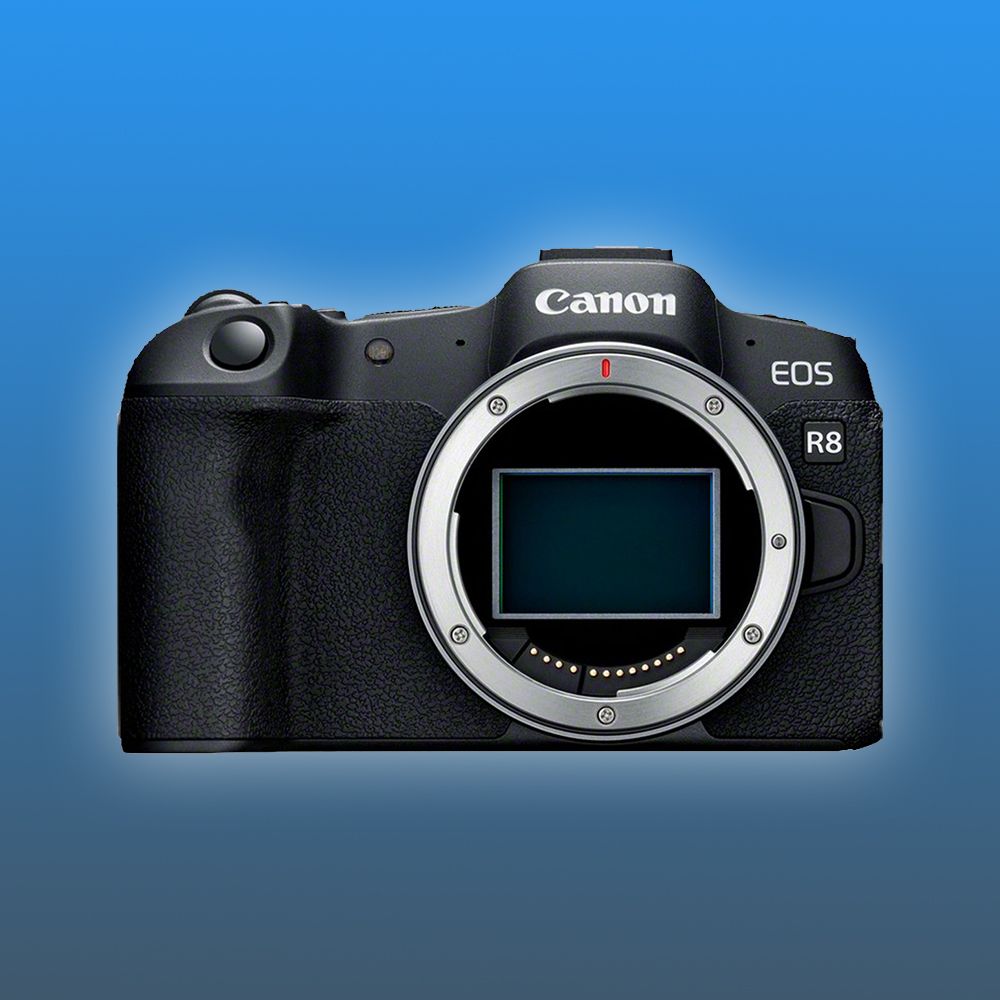
Canon
However, the R7 has the edge in a few key areas. The most important, to us, is the inclusion of IBIS, which allows for handheld long-exposure photography and much smoother video shooting without the crop that comes with digital stabilisation. It’s also worth considering the body itself, the R7 is not only more comfortable in the hand, but it comes with far superior controls thanks to the inclusion of a rear wheel and joystick.

Canon
As it stands, Canon has only released three RF lenses designed for APS-C, and none of them are particularly exciting. Of course, full-frame lenses will work with the R7, too, but not everyone is going to want to invest in pricey full-frame glass for their APS-C camera, unless they plan to upgrade in the future.
So, at present, we’d say the R8 is the more appealing option, but once we get some more RF-S lens options, the gap may narrow.
Trending Products

Cooler Master MasterBox Q300L Micro-ATX Tower with Magnetic Design Dust Filter, Transparent Acrylic Side Panel…

ASUS TUF Gaming GT301 ZAKU II Edition ATX mid-Tower Compact case with Tempered Glass Side Panel, Honeycomb Front Panel…

ASUS TUF Gaming GT501 Mid-Tower Computer Case for up to EATX Motherboards with USB 3.0 Front Panel Cases GT501/GRY/WITH…

be quiet! Pure Base 500DX Black, Mid Tower ATX case, ARGB, 3 pre-installed Pure Wings 2, BGW37, tempered glass window

ASUS ROG Strix Helios GX601 White Edition RGB Mid-Tower Computer Case for ATX/EATX Motherboards with tempered glass…


